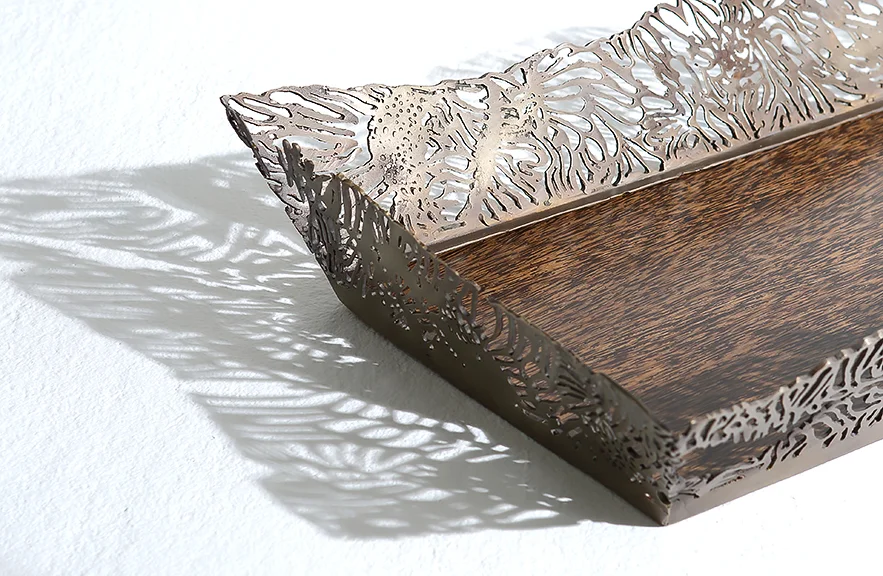The objects in the Spring 2016 collection are sculptural elements that were largely derived from different ideas of energy – pressure, harnessing, slicing, binding… the energy of the sea and the energy of the sun. In the Reef Vessels and Boxes, Alexander explored the energy of wrapping and binding. Working by hand with thick rope, he looked for interesting spaces and the expressive overlapping areas created around the knots that held the structure. There is a rawness to these pieces; a fetishistic quality of energy and strength that is rendered in lost-wax cast bronze.


The Cove Boxes are a set of three forms that sit gently together combining rich wood and polished brass, expressing a refined meeting of materials. Their lids with roughly wrapped textures and organic open pebble finials sit above the boxes made of finger-jointed solid Walnut. The Mitre Box is a long and elegant Oak box for a console or coffee table. Three finishes have been executed using different hand-finished gesso surfaces. One box is covered with delicately crackled ivory gesso; one is made with long cracks black lacquer over white gesso and a third is composed of long fissures that have been gilded with Mercury gold leaf. These boxes are made with meticulous hand work but they exude the essence of so many Alexander Lamont pieces – the craftsmanship of imperfection, whereby techniques are allowed to show the human hand and eye in a ‘precise yet un-precise’ manner that captures something more than the neatness and sterility of so much craft – something about the person who made it.


The Shale Vases are cast bronze and represent the idea of folded layers. Shale is a sedentary rock that forms as layer after layer of sand build ups over millions of years. The vases have this feeling of the pressure having warped and twisted and compressed them into their form – energy animating matter.

The Lagoon Tray takes a more naturalistic and playful idea in combining the open, moving sense of coral beneath the waves cast as bronze sides and the base that is made from Black Palmwood. Alexander loved the delightful contrast of oceanic forms and materials for this piece and the success in casting such thin and free formed patterns in the coral.

The Scallop bowls are works of curvature that draw their form from another element from the sea – the shell. Finally, the Umbra Vases were inspired by the idea of the moon: its loneliness and isolation and the way that we see its scarred surface sliced and cut by the curving lines of shadow and light emanating from the sun.


This group of objects marks a strong artistic approach to pieces for the home. Alexander, like the craftsmen of Japan and Europe in times past, sees a wonderful potential for creative expression in the more domestic categories of our lives. Rather than things to be hung high on the wall or mounted on stands, he likes to make his most potent forms within the genres of tray, box, bowl and vase – the things we touch and live with. These pieces live among us and greet us in our intimate spaces. With these humble pieces he hopes to inspire and delight the viewer.




